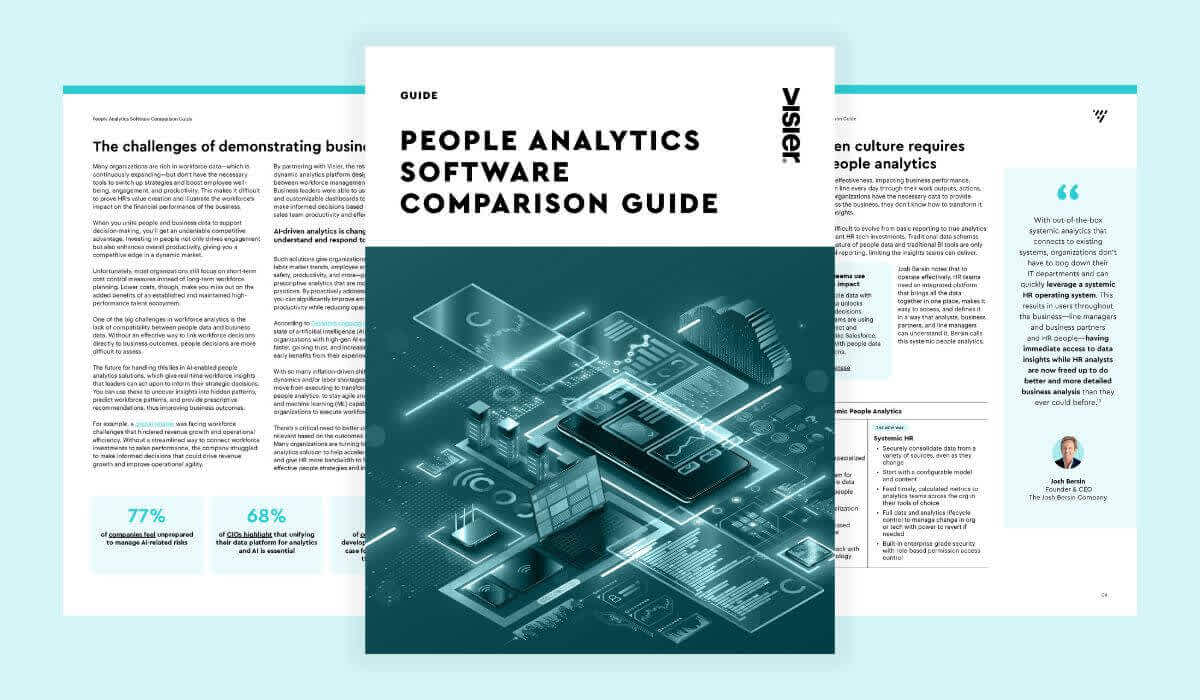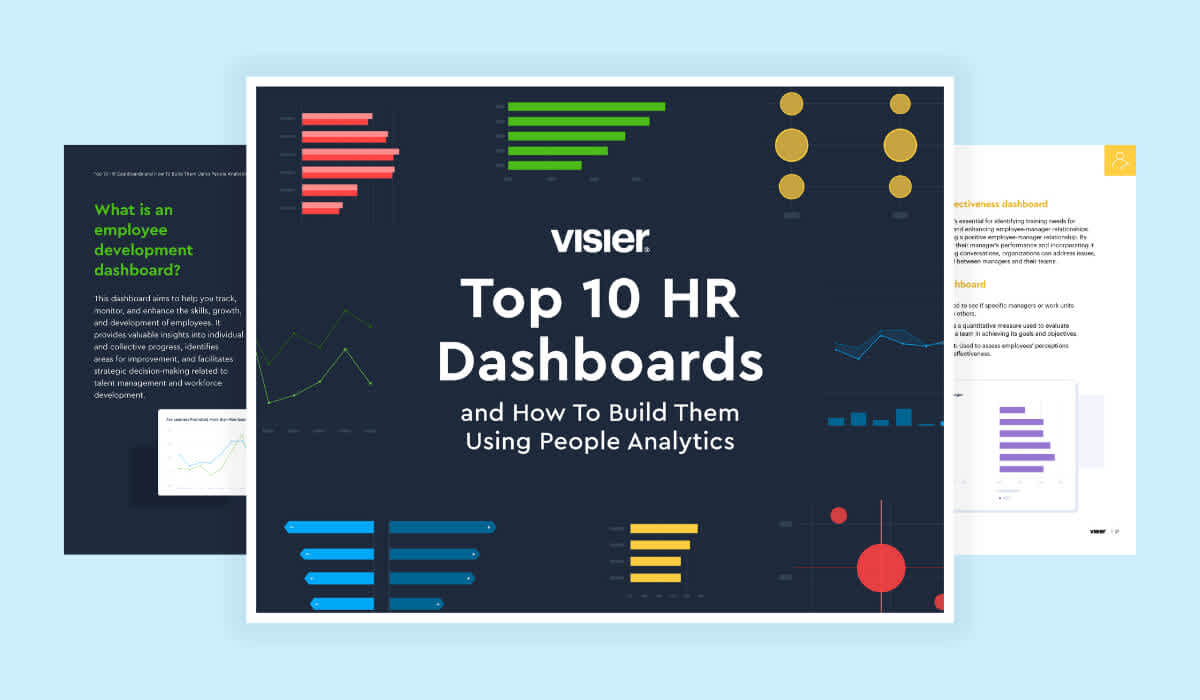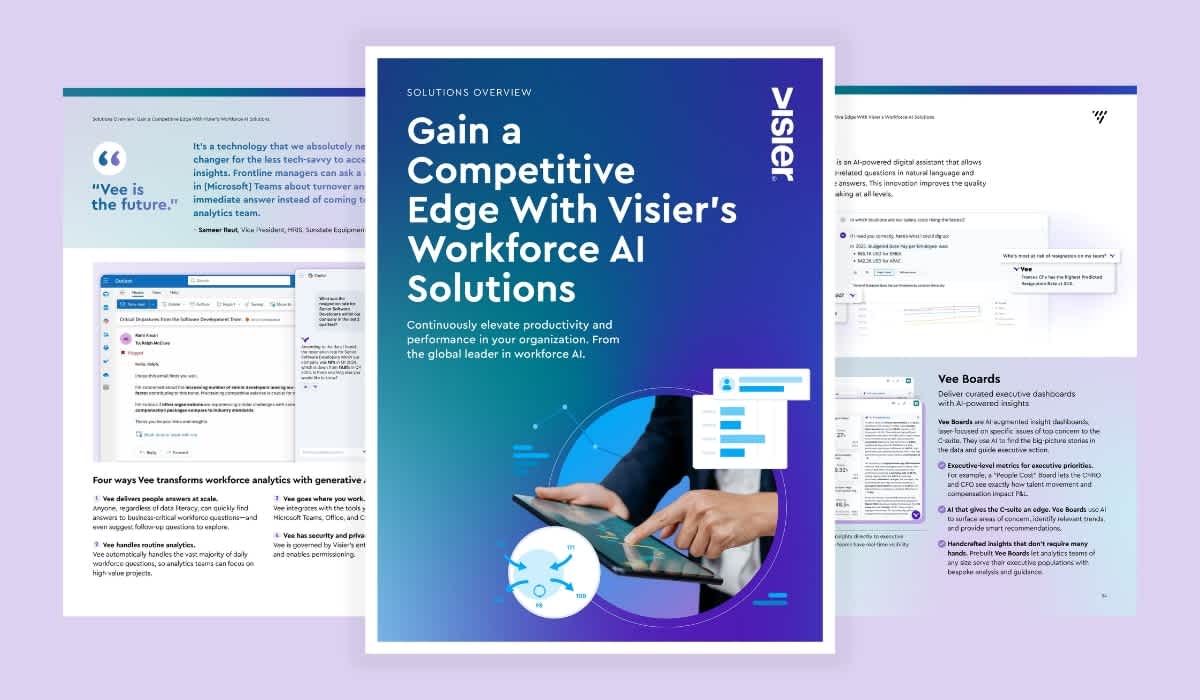5 HR Analytics Examples and Real-World Use Cases
Data is the building block of a strong HR strategy. Here are five HR analytics examples to get you started.
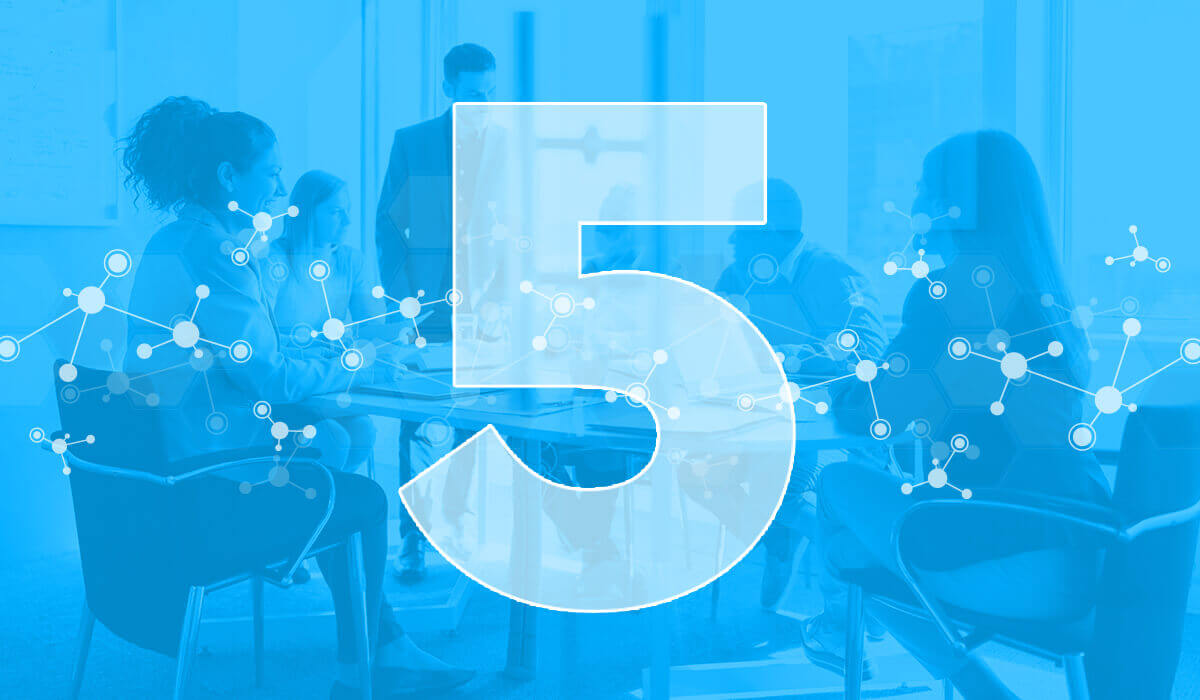
At first glance, HR analytics help companies change the way they use their workforce to get better business results. But most HR analytics tools get super granular when it comes to how you collect and analyze HR data, showing you exactly where you need to improve.
After all, how you use HR analytics will depend on your business and goals. The introduction of new technologies such as artificial intelligence (AI) as well as changing market demands also leaves its mark on how and why we use HR analytics in the first place.
Here’s everything you need to know about the various use cases behind HR analytics, along with some HR analytics examples that will get you on the right path from the start.

What is HR analytics?
HR analytics is the process of collecting, analyzing, and reporting on HR data to improve business outcomes and make better decisions about your workforce. It helps you cover data related to your human resources, including the time to hire, time to productivity, retention, engagement, and more.
Some companies also use the terms people analytics and workforce analytics. These are similar concepts, but they’re not the same.
As the name suggests, people analytics work with people data relating. That can mean employees, but it can also mean those outside the company, including customers and stakeholders.
Workforce analytics strictly use data related to your workforce. This includes internal collaborators such as employees and external ones like freelancers, consultants, and gig workers.
All three analytics types share one common goal, though: to help businesses make data-informed decisions about their workforce and business processes.
How to use HR analytics: Incorporating AI and meeting employee demands
While the way you use HR analytics, depends on your goals, strategy, and ultimately what your employees want, we’ve got a few steps to help you get started on the right path.
Remember: With proper human supervision, you can safely turn to AI-based HR analytics tools to speed up reporting and handle complex data, even when you don’t have enough people on your HR team. You can use AI features to take some of the burden off your team's shoulders so they can focus on what matters the most instead of manual analytics or operational processes.
1. Set your goals
These should be SMART (specific, measurable, achievable, relevant, and time-bound) so you can easily tailor them to your own needs and track progress. You don’t need to spend hours continuously monitoring your results. AI can come in to track these, notify you of important changes, and even predict if you’re headed in the right direction or not.
2. Collect accurate data
Never gather data just for the sake of having data. Choose data types that can help you reach your goals and make sure you’re pulling these from all available sources for a more accurate representation of where you stand.
3. Choose what tools you’re going to use for data analysis
Analysis is the core of the HR analytics process so you’ll need a tool that can keep up with your needs even as you scale. Look for a tool that can easily be connected to your HRIS or other people management solutions you’re using. AI features are always nice-to-haves to help you automate routine tasks, identify irregular patterns in employee behavior, proactively see if someone’s at risk of leaving the company, and more.
4. Run your data analysis
Depending on your goals, you may use one or several types of analytics like:
Predictive analytics: These most often rely on advanced machine learning algorithms that guide you in forecasting skill gaps, engagement rates, turnover risk, and more.
Prescriptive analytics: Use these steps to understand your next action items and get AI to recommend the best strategies to help with your most pressing challenges.
Diagnostic analytics: Ditch the manual work and let AI analytics look at your entire historical data to identify issues you might have missed and prevent similar hurdles in the future.
Descriptive analytics: Get a concise summary of historical trends to better understand what’s currently influencing (positively or negatively) your workforce.
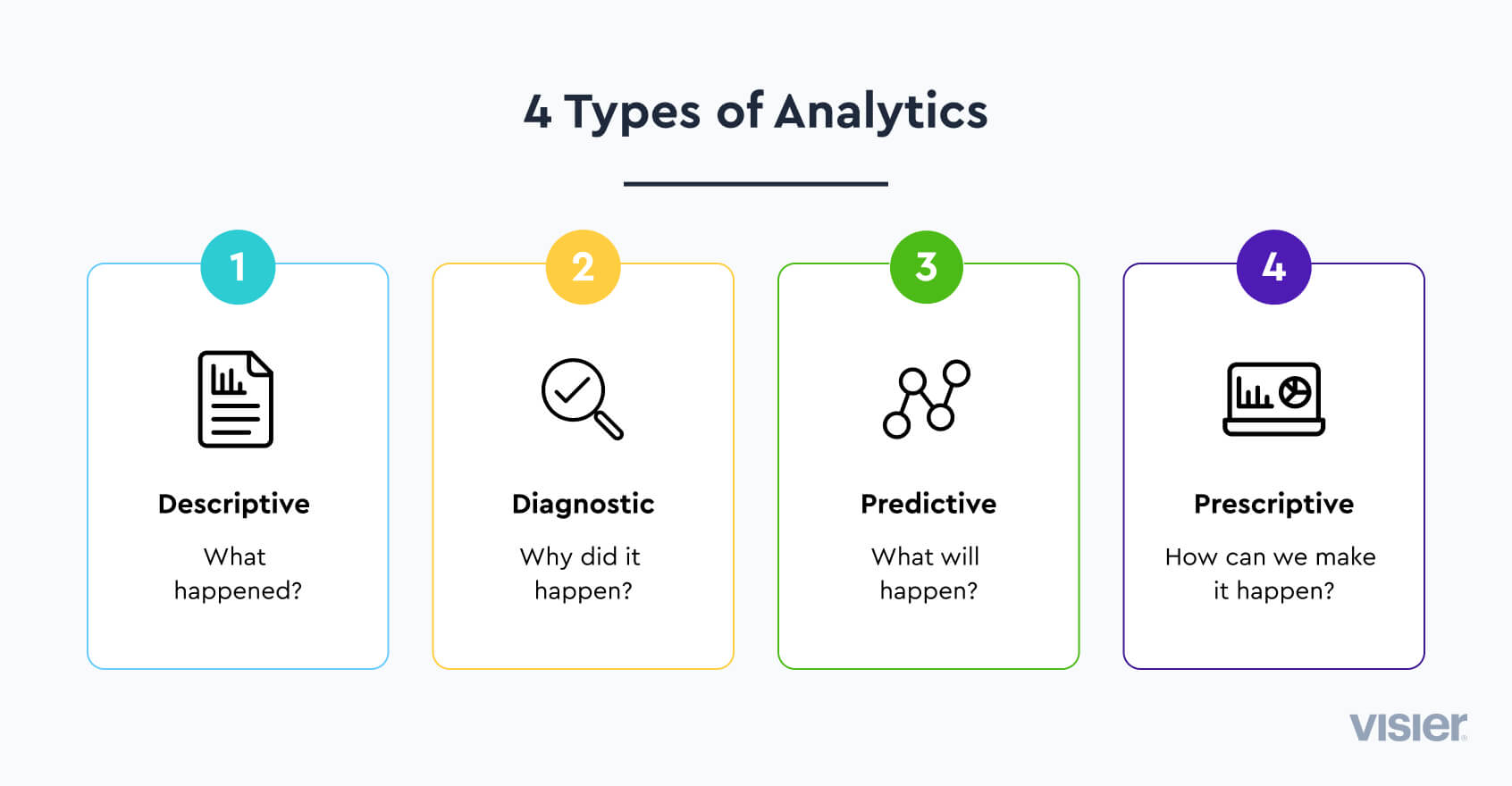
You can also consider using a mix of data types. Combining people data (like demographics, skills, or performance metrics) and work data (like project timelines, productivity, and collaboration metrics). This lets you identify further problems or trends that you wouldn't be able to identify if you used only a single type.
For example, by mixing people and work data, you could track team performance patterns and also help your management see if higher productivity means your talent is at risk of overutilization or burnout.
5. Make data-driven decisions
The main reason you’re using HR analytics tools is to improve your decision-making process. If you’ve covered the previous four steps, you should now have easily accessible and interpretable data that will allow you to ditch the guesswork.
Pull in your favorite AI assistant to help with reporting, too, so you can focus on the final decision, not how your report looks.
Concrete ways of using HR predictive and prescriptive analytics
To paint a clearer picture of when you might use two core types of HR analytics, we’re covering a couple of popular predictive and prescriptive scenarios you might also bump into:
Examples of predictive analytics in HR
Predictive HR analytics combine statistical and historical data to predict future trends. Here are a few scenarios when you’ll want to consider predictive analytics:
Predicting employee turnover. You can reduce bias and false assumptions by getting AI tools to act as an objective data analyst. As a result, you’ll understand what drives employees to quit and how that will impact your organization. HR analytics allows you to see what factors influence these decisions and identify the missing parts in your HR strategy (e.g. succession planning, employee engagement efforts).
Predicting performance. This is another aspect you can’t correctly predict single-handedly as subjectivity will likely play a huge part in the final decision. While AI is going to give you a clearer understanding of what motivates someone to perform better, you’ll want to mix this strategy with human reach. The latter includes talking to employees to get a better picture of how they’re feeling, what their goals are, and many more aspects you’re likely not tracking yet.
Succession planning. Every company needs a succession plan, no matter how basic. And for that, you first have to decide which employees are most likely to make good leaders or move into new/higher positions. Predictive analytics can guide you with that so you can build better training and knowledge retention programs.
Predicting how likely a candidate is to succeed in a role. You can use predictive HR analytics at any stage of the employee lifecycle. The earlier, the better your chances are for hiring the right people in the first place.

Examples of prescriptive analytics in HR
If you’re using prescriptive analytics, it means you want to go beyond predictive analytics. You’re now looking at why certain trends or challenges happen and deciding how to approach them. Here are a few scenarios when you’ll want to consider prescriptive analytics:
Retention strategies. Prescriptive analytics shows you what retention strategies are likely to work with your employees based on common past patterns. For instance, if an analytics platform identifies problems with employee stress levels, it might come in to recommend specific action plan ideas such as launching a wellness program or giving them access to free mental health workshops.
Recruitment strategies. You can reduce the costs and the burden that chaotic recruitment brings by simply having prescriptive analytics look at what strategies are likely to work. With a solution like this, you can improve your offer to acceptance rates by analyzing what tools or strategies you need to automate scheduling or reduce the number of needed interviews.
Diversity and inclusion initiatives. Although some companies were pushed to decrease the number of people on their DE&I teams recently, it still stands as a long-term play. Use prescriptive analytics to choose the best DE&I initiatives to improve retention, reduce bias, and create a healthier work environment.
Internal mobility tactics. Lateral and vertical movement helps you reduce costs and keep your top performers. Prescriptive analytics will tell you what the most effective tactics for internal mobility and mentoring are.
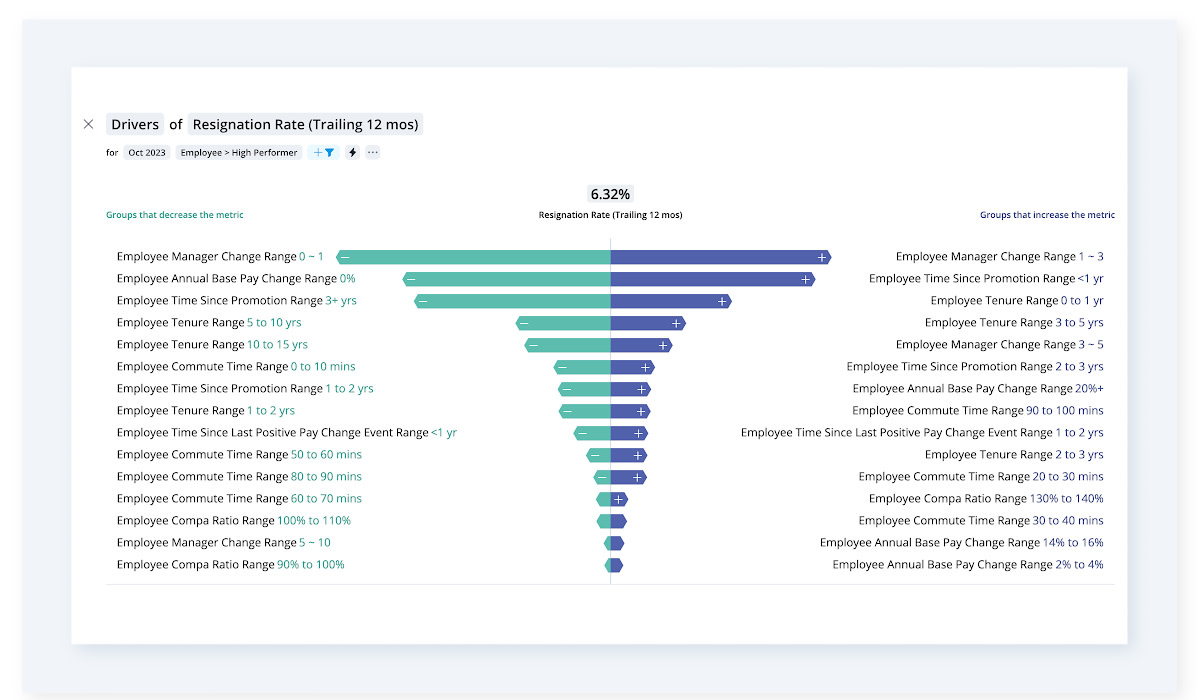
Dig into drivers of resignation rates to understand why employees exit
HR analytics metrics you need to measure first
You might have picked the right type of HR analytics, but the HR metrics you track are perhaps even more important for ensuring you’re not focusing on the wrong things. You don’t have to track everything though. Here are four fundamental HR analytics metrics to start with:
Time to fill. The time to fill (or to hire) is an excellent measure of how well your talent acquisition program works. The more time you need to fill a position, the more resources you waste, and the more ineffective your recruitment program is.
Employee turnover rates. This metric assesses the success of your retention strategies and works wonders together with predictive HR analytics. It helps you analyze the correctness of your forecasts and adjust your processes accordingly.
Promotion and internal mobility rates. Track the rates of vertical and lateral movements within the company. The higher the number, the better your succession planning and internal mobility strategies. When employees can be promoted to new positions, it shows you have a healthy talent pipeline with plenty of development opportunities.
Diversity and inclusion metrics. You may have guessed it already, but these metrics show you the success of your DE&I initiatives. Alongside HR analytics, they can help you create a more inclusive culture, where everyone feels welcome and has equal opportunities.
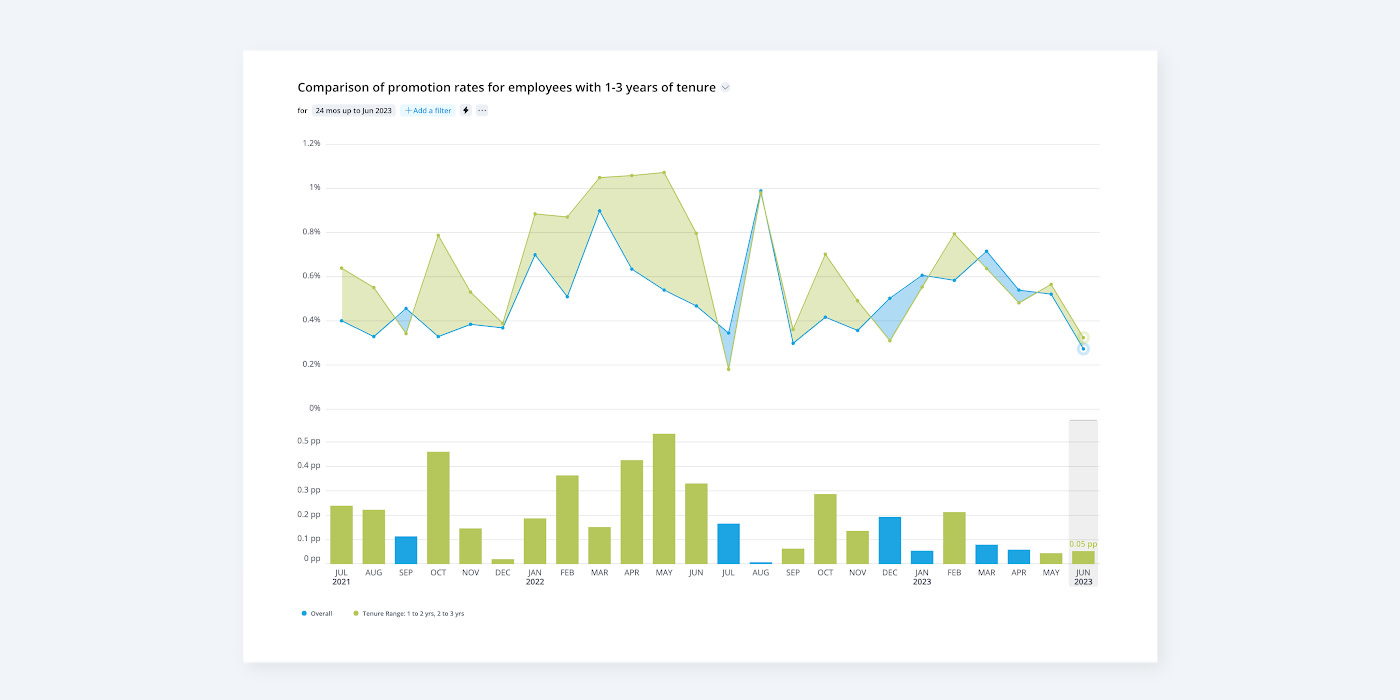
5 HR analytics examples to inspire your team
No matter what type of HR analytics you go for, you’ll likely use HR analytics slightly differently. Let’s go through a couple of HR analytics examples and see how other organizations are using them for your own needs.
1. eBay
One way global commerce company eBay uses HR analytics and insights is to make data-driven decisions that improve the employee experience. Scott Judd, Senior Director of People Analytics & Technology shares,
"Employees in many ways are the most important asset that any company has, and you need data to understand how you can help them stay with your company and help them improve. Analytics is a great way to drive those discussions with data and help make the future more exciting for employees and better for your clients."
By using HR analytics across the employee lifecycle, eBay can now find new ways to increase retention like promotions, compensation changes, and career development plans.
2. Providence
Providence uses Visier for HR analytics to improve its hiring process. In a tight labor market, their team was able to use insights to accurately forecast vacancies and proactively hire the right talent to ensure they have the right people in the right roles at the right time—ultimately saving the company $3 million.
Mark Smith, Vice President of Workforce Strategy & Analytics, notes:
“The biggest outcome we’ve seen is how we now forecast vacancy. We used our data from Visier to understand what would happen in the next quarter for some of our key openings. It’s allowed us to give leaders an opportunity to make better choices about whether or not they want to hire ahead.”
By reuniting their people and business data, Providence gained powerful, digestible insights that business leaders use to make informed hiring decisions impacting the workforce and the bottom line.
3. Protective Life
Protective Life uses Visier to predict employee turnover to slow resignations, measure DE&I progress, and engage business leaders beyond HR. Matthew Hamilton, VP of People Analytics & HRIS, shares:
"Getting data out into the hands of leaders and democratizing data is really important. A lot of change happens at the frontline or mid-level manager level. So it's really important to get the relevant insights into their hands so they can use the data and ultimately pull those levers of change to improve the employee experience, diversity, talent, and acquisition."
By using HR analytics and putting people insights directly in the hands of leaders, they're able to arm key decision-makers with the insights they need to impact business performance
4. T. Rowe Price
HR analytics have the T. Rowe Price team a single, reliable data source and access to the Vee chat-based interface for easier data access and fewer inquiries directed to the analytics team. Vee's generative AI also helps them automate HR reporting tasks, like headcount and turnover, so they can focus on strategic processes instead of manual work.
On how they’ll use Visier in the future, Shannon Rutledge, Director, HR Data & Analytics, observes:
“With Visier, we're hoping to see more effective data delivery linked to our strategies. One key area we're focusing on is measuring the impact of our TA function, which has historically been difficult to analyze. We're excited about the insights that Visier will provide.”
5. Experian
Experian used Visier's HR analytics to reduce reporting workload by 70% and create a single, dependable source for their people data. Now with Visier, the team spends more time on retention risk planning, DE&I, and cutting costs. With Visier products like Essentials, Talent, Benchmarks, and Standardized Occupations, Experian management made data more accessible for both HR and finance.
Kevin Metherell, Head of People Analytics Insights and Innovations, remarks on the results:
“After the implementation of Visier we—almost overnight—managed to cut about two-thirds of our reporting capacity and capability into the self-service remit, which was massive in terms of the time saved for the team and the effort we were spending on it.”

HR analytics FAQs
What are the four types of HR analytics?
The four types of HR analytics include predictive analytics, prescriptive analytics, descriptive analytics, and diagnostic analytics. We've covered these in detail in the article above including a couple of common scenarios when you might use each of them for different goals.
What is the difference between HRIS and HR analytics?
HRIS (Human Resource Information System) is a software that stores all your employee data so you can manage payroll, personal details, and benefits. HR analytics is more of a process you can use to analyze such data and gather the you need to make better decisions. Many HRIS tools also come with native HR analytics tools but you can find the latter as stand-alone platforms as well. In the second scenario though, you'll often have to connect your HR analytics solution to other platforms you're using (including the HRIS) to collect relevant data.
How does HR analytics benefit businesses?
HR analytics comes with a vast series of benefits but it's ultimately up to you to decide what your most pressing challenges are. That's because HR analytics can technically help with everything that requires a decision-making process. For instance, businesses can use it to spot productivity trends, forecast employee needs, and simply offer a better employee experience.
More about HR analytics
HR analytics tools help companies collect, analyze, and glean insights from their HR data. These are the key features to look for in an HR analytics tool.
Effective use of HR analytics and reporting within an organization helps to drive evidence-based and objective decision-making. Learn more here.
Finding and analyzing the right data using HR analytics helps companies make the right decisions for their workforce and organization. Here's everything you need to know about HR analytics.
Predictive HR analytics let you make predictions and forecasts about future performance based on historical HR data.

